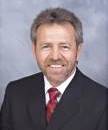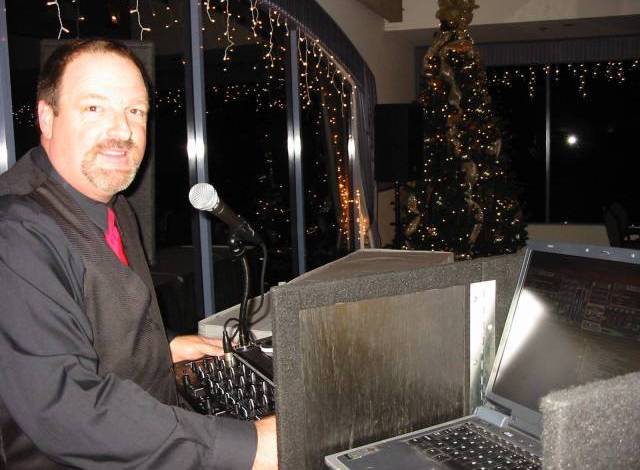






3853 Atlantic Ave.
|
Click here |
Harbor Comm'rs. Hankla & Cordero, Port Planning Dir. Knatz & Councilwoman Comm'r. Hankla Says He Thinks Terror Scenario Was Somewhat Debunked In Visit w/ Coast Guard; Councilwoman LB Harbor Commrs. Give Preliminary OK To Contract w/ Hazard Assessment Firm For What Port Calls "Worst Case" Scenarios, Would Compare Proposed PoLB LNG Facility To Other Flammable Fuel Facilities Like Refineries, Tank Farms & Gas Storage
Comm'r. Hankla Wants Hazard Assessment Firm's Rep To Attend Coming Harbor Comm'n Meeting To Respond To Points Raised By LNG Project Opponents, Wants Harbor Comm'n To "Lay This Issue To Rest And...Meet It Head On"
(July 30, 2004) -- LBReport.com has learned that LB Harbor Commissioners James Hankla and Mario Cordero, Port of LB Managing Director Geraldine Knatz, Ph.D. and 7th district Councilwoman Tonia News of the visit became public during a July 26 Harbor Commission Development Committee meeting when Harbor Commissioner Hankla, a retired LB City Manager and former Alameda Corridor CEO, mentioned that he thinks the argument that an LNG facility might be a terrorist target was "somewhat debunked" during a recent meeting in Boston with Coast Guard representatives. The Boston area LNG facility in Everett, MA was sited during the 1970's...and large LNG tanker ships transit through Boston harbor.
"[O]ne of the big criticisms that is leveled at this potential project, proposed project [in the Port of LB] is that it's a target for terrorists, which I think was somewhat debunked by our recent visit to Boston, where we met with Coast Guard representatives," Commissioner Hankla said while prefacing a question (extended transcript below).
Asked by LBReport.com whether she shares Commissioner Hankla's view, Councilwoman "My conclusion, what I gathered was that the Coast Guard felt there were probably more profitable targets for terrorists to attack because of the heightened security that surrounds the LNG deliveries. I didn't take it to mean there wouldn't be a threat."
Councilwoman Councilwoman The trip took place June 23-24, 2004 (June 23 was transit) and featured a meeting with the LNG facility operator and U.S. Coast Guard Boston officialdom. Councilwoman Boston Mayor Thomas Menino -- a former president of the U.S. Conference of Mayors -- has opined that he believes the Boston harbor area LNG facility poses homeland security risks to Boston, especially after LB Mayor Beverly O'Neill, now in line for the Conference of Mayors' post once held by Mayor Menino, has backed the proposal by a Mitsubishi subsidiary to put an LNG facility in the Port of LB, roughly two miles from LB's downtown civic center. At the same time, Mayor O'Neill has also been a frequently traveler to Washington, D.C., seeking additional federal taxpayer money for Port-related security.
The Harbor Commission's July 26 discussion came during consideration of a contract with Quest Consultants, Incl. for what LB Port officials call a "worst case" hazards assessment of the proposed LB LNG facility. Commissioners, who were then sitting as a Port's Development Committee, voted to advance the contract to the full Harbor Commission (i.e. to themselves) for a subsequent vote...with Commissioner Hankla insisting that a Quest representative attend the forthcoming meeting to respond to critics of the proposed LNG project.
"I think we ought to invite these folks [Quest representatives] to come back. I think we should because I don't want them [LNG project critics] to come back two weeks later and say 'well that's not really what we requested and that really wasn't the thrust of our criticism, it was actually something else.' So I'd like this gentleman to be present or some other representative of Quest when the Board considers it [the contract retaining Quest as the hazard assessment firm]. I think we ought to we ought lay this issue to rest, and I think we ought to meet it head on," Commission Hankla said.
The Port of LB staff report on the LNG hazards assessment contract says in pertinent part:
LBReport.com posts the five page Port of LB staff report on the LNG hazards assessment contract on a link below. It was provided to us on request by the Port of LB.
At the July 26 Port Development Committee meeting, Commissioner Hankla asked Port staff if two individuals who had raised issues about the Quest contract when the Board considered it a few weeks earlier were advised of the agenda item. [The two individuals are LB writer Bry Myown and CA Earth Corps president Don May]. Port of LB Planning Director Bob Kanter, Ph.D. replied that the item was publicly agendized but didn't know if the two individuals had been specifically advised.
Harbor Commissioner Doris Commissioner Hancock told staff, "I compliment you on the thoroughness of this report. I think you've responded well to the issues that were raised by the public, and I think that we all took concern about the fact that they were raised and instructed you to go forward and do some additional due diligence which I believe you've done appropriately. I think the assumptions that you've outlined in here are ones that I'm comfortable with." He suggested that copies of staff's analysis be conveyed to Ms. Myown and Mr. May since they were not present, adding "I suspect they tend to know when these things are on the agenda."
An exchange subsequently ensued, which we have transcribed in pertinent part [our transcript, unofficial]:
Commissioner Hankla: The fact that they're not here is strategic.
Unidentified: Probably.
Commissioner Commissioner Hankla: And that troubles me...
Commissioner Cordero: ...I think the questions really come from the fact that obviously we're dealing with a very important project in which the community is going to be looking at this project and scrutinize the project. Myself, if we could avoid unnecessary scrutiny and avoid any pitfalls, to make sure the community is aware that all the parties involved in this project...are doing it in such a way in which we're not going to be subject to some kind of questioning with regard to some of the shortcomings of the studies...
Port Exec. Dir Steinke: ...I just would comment that this is at the Committee level. We can certainly inform the members of the public who were concerned about it the last time it was presented at Committee but they certainly have the opportunity to comment and Commissioner Hancock: Could I amend my suggestion? I think that's a good point. This is a Committee. Let's make sure they know it's on the agenda at the Board meeting and let's not send that out in advance but again make the same presentation at the Board meeting...
Commissioner Calhoun: [invites Quest Principal Engineer, John Cornwell, to explain what Quest did regarding the Boston LNG facility after John Cornwell, Quest Principal Engineer: We got a call on either Thursday or Friday September 26 or September 27, 2001 from the Department of Energy. At that time, all traffic in Boston harbor was stopped following the events of September 11th.
And the Department of Energy and the Coast Guard and other agencies in the federal government were trying to determine if and when and how to reopen the harbor.
The question put to us by phone was, what are the effects following the largest possible release of LNG in Boston harbor? That's the question. And of course they needed this pretty quickly. This is not outside of what we do, I wouldn't say on a day to day basis, but it is our business and we do these calculations on a routine basis.
We looked at two different things: one, a land based release from the storage tank, and one a ship-borne release. The land based release is fairly straightforward, because outside the tanks there is a dike, so you have an impoundment area, so if you have a release from the tank regardless of how it's caused, the liquid spreading is contained. And if you have a fire, the fire is defined and that's fairly straightforward and there really hasn't been any issue associated with that part of the work.
The ship releases are a little bit more problematic. Obviously, how large the hole is plays a factor in how fast the material comes out of the ship. If we go back thirty years to the early days of the LNG business in the United States, the assumption simply was that all 25,000 cubic meters in one of the round, And realistically, that can't happen. So you have to come up with a way to punch a hole, so to speak, into the carrier. Historically, this has been considered to be done by a ship collision. So you have a ship of sufficient size and speed who runs perpendicular into the ship, the LNG ship, causing a failure of the internal cargo tank and the outflow of the liquid.
If you do that, you lose about half of the cargo. The cargo that's below the water level simply just can't come out, at least can't come out rapidly, since it's lower than the hole.
So the question becomes then how big is the hole? There are two ways, one is the ship collision, and we assumed -- and it's key to understand this is an assumption -- that the largest hole created by a ship collision would be five meters in diameter.
The other way that you can create a hole, of course, is in the current state of the country is through terrorism. And you have to understand the structure of LNG tankers. They're double-hulled ships. There's insulation. There's a third tank is the cargo tank, either a membrane tank or a spherical tank.
We looked at that and said if you could generate a hole through explosives, similar to that performed on the U.S.S. Cole, would you create as large a hole on the inner hull and then further into the LNG cargo tank? And our response was no.
Commissioner Calhoun: Was the Cole a double-hulled vessel?
Mr. Cornwell: No, the Cole was a single-hulled destroyer.
Commissioner Calhoun: OK.
Mr. Cornwell: And at that time, we felt like the largest hole you might be able to generate from a terrorist event in the cargo tank would be a one meter hole. Now, so we're back to the largest release. The simple question from DOE [Dept. of Energy] was the largest release, so the most mass in the shortest period of time, has to come from a ship collision.
A ship collision of sufficient size and speed can't happen at the dock, you don't have maneuvering room so you can't get another ship of sufficient size and speed to collide there. You can't do it in the inner harbor. It has to happen in the outer harbor.
Now that was done over the weekend. We wrote the letter, submitted it to DOT [may mean DOE] on October 2, which I believe was a Tuesday. DOE called, had some additional questions. We answered those questions and wrote them a second letter on October 3, Wednesday.
And that was the end of it. This information, along with a lot of other information that the government had, enabled them to make some decisions about Boston harbor and LNG commerce.
One of the things that's been misunderstood in this whole process is that the results we gave FERC, or DOE in this case which eventually ended up going to FERC, we said were representative of the type of release you would expect to see under these conditions.
Part of the controversy has come from people using the word "representative" to mean misled, and that is not true. If these events happen, they are large events.
And in the "scientific community" we can argue about the difference between 660 and 700 but really those are the same thing...
[intervening colloquy]...
Commissioner Hankla: Have you considered, since one of the big criticisms that is leveled at this potential project, proposed project, is that it's a target for terrorists, which I think was somewhat debunked by our recent visit to Boston, where we met with Coast Guard representatives, but have you considered the possibility that an aircraft might be crashed into one of these vessels?
Mr. Cornwell: Into one of the ships?
Commissioner Hankla: While it is at berth or in the harbor.
Mr. Cornwell: That is certainly something people have looked at in the past, particularly in reference to land based facilities, and those would be accidental, accidents, but the issue of running a plane on purpose into a ship is a relatively new concept. You get into some additional factors such as the size of the plane and things like that that have to do with structural integrity, but it is one of the scenarios that the Port has defined.
Commissioner Hankla: We're looking at that possible scenario, are we not?
Mr. Cornwell: Yes.
Commissioner Hankla: I would make one slight change. I think we ought to invite these folks [Quest representatives] to come back. I think we should because I don't want them [LNG project critics] to come back two weeks later and say 'well that's not really what we requested and that really wasn't the thrust of our criticism, it was actually something else.' So I'd like this gentleman to be present or some other representative of Quest when the Board considers it [the contract retaining the hazard evaluation firm]. I think we ought to we ought lay this issue to rest, and I think we ought to meet it head on.
The July 26 LB Harbor Commission discussion took place just days after the On Sept 11, 2001, terrorists boarded planes at Boston and Newark -- airports both operated by Port Authorities.
The Ports of LB and L.A. together comprise the nation's busiest container complex...through which many of America's consumer goods flow. During an October 2002 labor dispute, President Bush issued an Executive Order, enforced by a federal court, saying the Ports had to remain open as a matter of national importance.
The Mitusbishi subsidiary seeking permission to build and operate the LNG facility in the Port of LB stated the following in the Frequently Asked Questions section of its web site, www.soundenergysolutions.com, regarding terrorist attack:
In recent terrorist activity, aircraft and the aircraft fuel were weaponized. Potential terrorists may have access to weapons, but the means of delivery becomes a problem for large weapons. Due to a number of factors relating to construction features including diking and secondary containment, an LNG terminal facility is an unattractive target for terrorists. Any attack would need to overcome security precautions and circumvent emergency shutdown systems. The LNG tanks are the obvious target because all of the other facilities, e.g., piping, have much smaller amounts of LNG circulating through them and are subject to both instantaneous automatic and manual shutdown.
The tanks are designed for "full-containment" and constructed of an inner tank of high strength, low temperature steel, with an outer tank of thick pre-stressed concrete. The facility's tank design will resist blast pressure and fire radiation from outside forces. In early July 2004, a publication covering LNG news reported that for the week of July 26, LNG would not be delivered to the Everett, MA facility to accommodate extra security for the Democrats' national convention.
The Port of LB is governed by five LBReport.com has posted the Port of LB's staff report on its proposed LNG hazards assessment contract. To view it in pdf form, click July 21, 2004 PoLB staff memo re Hazards Assessment Contract/Response to Issues Raised in Public Comments.
Contact us: mail@LBReport.com |